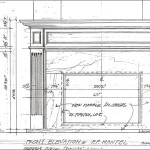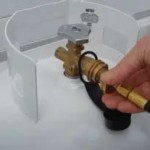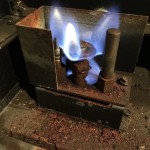How Much Do Fireplaces Cost To Install?
Installing a fireplace is a significant home improvement that can add warmth, ambiance, and value to a property. However, understanding the associated costs is crucial before embarking on this project. Numerous factors influence the final price tag, ranging from the type of fireplace chosen to the complexity of the installation process. This article aims to provide a comprehensive overview of the costs involved in fireplace installation, helping homeowners make informed decisions.
The overall cost of installing a fireplace can vary widely, generally ranging from a few hundred dollars to several thousand. This broad range is attributable to the diverse options available in terms of fireplace types, fuel sources, and the extent of necessary structural modifications. A simple electric fireplace insert might be relatively inexpensive to install, while a full-fledged masonry fireplace requiring extensive chimney construction will understandably be much more costly.
Factors Influencing Fireplace Installation Costs
Several key factors significantly affect the cost of fireplace installation. Carefully evaluating these factors will help in accurately estimating the total expense and planning the project accordingly.
The
type of fireplace
is a primary cost determinant. The main types include wood-burning, gas, and electric fireplaces, each with distinct installation requirements and price points. Wood-burning fireplaces are typically the most expensive due to the need for a chimney and associated venting systems. Gas fireplaces require gas line connections, while electric fireplaces are generally the least expensive to install, as they only need an electrical outlet.The
fuel source
affects the associated costs. Wood-burning fireplaces necessitate considerations for wood storage and handling, including building a wood shed or designating space for stacking wood. Gas fireplaces involve the cost of connecting to a natural gas line or purchasing propane tanks. Electric fireplaces, while having lower upfront installation costs, will contribute to higher electricity bills over time.The
complexity of the installation
plays a crucial role. If the installation is a simple insert into an existing fireplace opening, the labor costs will likely be minimal. However, if the project involves constructing a new chimney, running gas lines, or making significant structural alterations to the home, the labor costs will increase substantially. This includes potential expenses for permits, inspections, and specialized tradespeople.Materials and finishes
also contribute to the overall cost. The choice of materials for the fireplace surround, mantel, and hearth will influence the final price. Options range from inexpensive prefabricated surrounds to custom-built stone or brick veneers. The selection of high-end materials and intricate designs can significantly increase the budget.The
geographic location
can affect the cost of labor and materials. Labor rates vary across different regions, and the availability of certain materials may also impact pricing. Areas with higher costs of living typically have higher labor costs for fireplace installation.Finally,
permit acquisition
is crucial. Most municipalities require permits for fireplace installation, especially for gas and wood-burning models, to ensure compliance with safety codes and building regulations. Permit fees vary by location and can add to the total project cost.Cost Breakdown by Fireplace Type
Understanding the specific cost implications of each type of fireplace is essential for effective budgeting. The following sections provide a breakdown of the estimated costs associated with installing different types of fireplaces.
Wood-burning fireplaces
typically incur the highest installation costs. This is primarily due to the necessity of a chimney, which requires extensive construction and can cost several thousand dollars depending on factors such as height, materials, and accessibility. The cost of the fireplace unit itself can range from $1,000 to $5,000 or more, depending on the size, design, and efficiency. Installation labor can add another $1,000 to $3,000, depending on the complexity of the project. Including the costs for permits and inspections, a wood-burning fireplace installation can easily total between $4,000 and $10,000 or more.Gas fireplaces
offer a balance between cost and convenience. The fireplace unit itself can range from $800 to $4,000, depending on the size, style, and features. Installation costs include running a gas line to the fireplace location, which can range from $250 to $1,000, depending on the distance from the main gas line and the difficulty of the installation. Venting is also required, though it is typically less expensive than a full chimney for a wood-burning fireplace. Venting costs can range from $200 to $800. Labor costs for installation can add another $500 to $2,000. The total cost for a gas fireplace installation can range from $1,500 to $7,000.Electric fireplaces
are generally the most affordable option for installation. The fireplace unit itself can range from $100 to $2,000, depending on the size, style, and features. Installation typically involves simply plugging the fireplace into an electrical outlet, although some models may require hardwiring, which could add to the cost. The main cost associated with an electric fireplace is the electricity consumption, which can vary depending on the usage and the electricity rates in the area. Labor costs for installation are typically minimal, ranging from $100 to $500 if any electrical work is required. The total cost for an electric fireplace installation can range from $200 to $2,500.Ethanol fireplaces
offer a ventless option with relatively low installation costs. These fireplaces burn ethanol fuel, producing heat and a decorative flame. The unit prices range from $200 to $5,000, depending on size, design, and quality. Installation is usually straightforward, involving placing the unit in the desired location. Since no venting is required, installation costs are typically minimal or non-existent. However, operating costs include the expense of purchasing ethanol fuel, which can be more expensive than other fuel sources. The total cost for an ethanol fireplace installation is generally the cost of the unit itself, ranging from $200 to $5,000.Additional Costs to Consider
Beyond the core installation costs, several additional expenses should be factored into the overall budget to avoid unexpected surprises. These costs may include site preparation, permits, inspections, and decorative elements.
Site preparation
may be necessary to create a suitable space for the fireplace. This could involve removing existing walls, flooring, or other structures. Site preparation costs can vary widely depending on the extent of the work required. This could potentially add several hundred to several thousand dollars to the overall project cost.Permits and inspections
are essential for ensuring compliance with local building codes and safety regulations. Permit fees vary depending on the location and the type of fireplace being installed. Inspection fees are typically associated with ensuring that the installation meets safety standards. Budgeting for permits and inspections is essential for a safe and legal installation.Decorative elements
such as a mantel, surround, and hearth can enhance the aesthetic appeal of the fireplace. These elements can range from inexpensive prefabricated options to custom-built designs. The cost of decorative elements can vary significantly depending on the materials used and the complexity of the design. Adding these features can increase the overall cost by several hundred to several thousand dollars.Chimney cleaning and maintenance
is an ongoing expense for wood-burning and some gas fireplaces. Regular chimney cleaning is essential for preventing creosote buildup and ensuring safe operation. Maintenance costs can include inspections, repairs, and cleaning services. Budgeting for ongoing maintenance is essential for the long-term safety and performance of the fireplace.Finally,
increased homeowner's insurance
is a potential cost for those installing wood-burning fireplaces. Insurance companies may increase premiums to account for the perceived risk associated with wood-burning fireplaces. Inquiring with the insurance provider about potential premium increases is essential before installing a wood-burning fireplace.By thoroughly considering these factors and obtaining multiple quotes from qualified contractors, homeowners can develop a realistic budget for fireplace installation and ensure a successful project that enhances the comfort and value of their homes.

How Much Does It Cost To Put In A Fireplace Direct Fireplaces

How Much Does It Cost To Install A Gas Fireplace Homeserve Usa

Fireplace Installation Cost 2024 Gas Wood Burning Electric

What Does It Cost To Install A Fireplace Vs Wood Stove Stamford Fireplaces

How Much Does An Electric Fireplace Cost 2024 Data Angi

Estimated Page Fireplaces Stoves Inserts Wood Gas Pellet

Gas Fireplace Insert Cost Forbes Home

Estimated Page Fireplaces Stoves Inserts Wood Gas Pellet

Fixr Com Cost To Install A Fireplace Build

Gas Fireplace Installation Cost Dbs Inc








